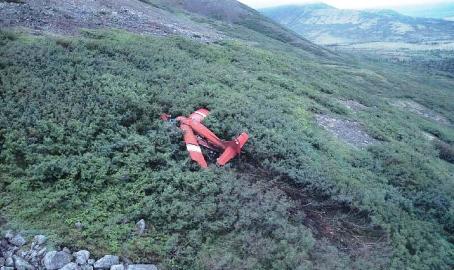The US National Transportation Safety Board wants safety regulators to revise medical guidance for certifying pilots after a stroke, and to issue new rules for carriage of flight data and cockpit recorders.
The recommendations were part of a final hearing on the August 2010 crash of a de Havilland DHC-3T Otter floatplane that was carrying former senator Ted Stevens and eight others from a lodge to an outlying fishing camp in Alaska. The pilot and four passengers, including Stevens, were killed when the aircraft struck a mountain in the presence of low ceilings. Four survivors were rescued the following day.
Rather than the weather, the NTSB homed in on the "highly experienced" pilot's seeming loss of situational awareness on a familiar route.
"The investigation examined the accident pilot's potential for impairment resulting from pilot fatigue or from recent major life events, including his retirement and the sudden death of a family member," says the NTSB.
 |
|---|
©NTSB |
The pilot had also experienced an intracerebral hemorrhage, or stroke, in March 2006. He regained his medical approval to fly two years later but the NTSB noted the process for such approvals is "inconsistent" among FAA-approved physicians. Twelve days before the 9 August accident, the pilot's son-in-law was killed in a C-17 transport crash at the Elmendorf AFB.
Investigators ultimately could not determine what happened in the Stevens crash and attributed the probable cause of the accident to the "pilot's temporary unresponsiveness for reasons that could not be established from the available information".
A contributing factor was the investigators' "inability to determine exactly what occurred in the final minutes of the flight" because there was no "cockpit recorder system with the ability to capture audio, images, and parametric data".
Among the five new recommendations calls for the US Federal Aviation Administration (FAA) to revise post-stroke medical guidance to include "specific requirements for a neuropsychological evaluation and the appropriate assessment of the risk of recurrence or other adverse consequences subsequent to such events".
Included with four additional revised or reissued recommendations is a call for the FAA to require "all existing turbine-powered, non-experimental, non-restricted-category aircraft" to have crash-resistant flight recorder systems for cockpit audio, "a view of the cockpit environment" and flight data.
Currently only two-pilot multi-engine turbine-powered aircraft with six or more passenger seats are required to carry the devices.
Source: Flight International























